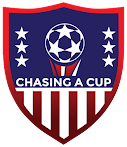

Club News
A 2021 Update on the 2001 age group
Published
5 years agoon
By
David Kerr
In 2020 we took a look at the 2001-2005 age groups and highlighted the strengths, weaknesses, and the top players of each age group. In this article, we will take a look at how the 2001 age group currently looks almost a year since our last article. After this, we will take a look at the 2002-2005 age groups in order. In youth development, changes from year to year as top players plateau and other player’s see their form improve. Overall, the 2001 age group is shaping up to be very strong and will end up producing a lot of quality professionals and potential stars for the USMNT.
Sadly, the 2001 age group was the focus year of the 2021 u20 World Cup cycle which was recently cancelled by FIFA due to Covid-19. This means that the next u20 and u17 cycles have started which will focus around the 2003 and 2006 age groups. But even though the current cycles have concluded, we will still continue with focusing around the 2001-2005 age groups for the next year as if the current cycles are still happening. In 2022 we will move on and break down the 2003-2007 age groups which will be the core of the 2023 u20 and u17 cycles. The good news for the 2001’s is that they are still YNT eligible because they are eligible for the 2024 Olympics which they will be the oldest age group and the leaders of our next u23’s. All of the age groups that we will talk about will be contending for spots on the USMNT until at least the 2030 World Cup.
In this article we will begin with a look at the strengths and weaknesses of the 2001 age group, followed by highlighting the top 10 prospects, then we will look at a two-string depth chart for the age group and a ranking of the current top-25 prospects. Because Gregg Berhalter has been doing a fantastic job of pursuing dual-nationals we will be including all USMNT eligible prospects from now on.
Strengths
For the 2001 age group there is a lot that fans should be excited about. The strongest position in this age group are without a doubt the wingers. The wide talent for the 2001’s is excellent with Uly Llanez, Konrad De La Fuente, Cam Harper, Matko Milijevic, Indiana Vassilev, Quincy Butler, Jordan Bender, Jalen Hawkins, and Joshua Penn. We have already seen both Uly Llanez and Konrad De La Fuente make their USMNT debuts as teenagers after they both played up in the 2019 u20 World Cup and had a great 2020 where they emerged as elite talents in their positions. Cam Harper, Matko Milijevic, and Indiana Vassilev would have been among the most talented wingers in older age groups but round out the top 5 players in this position for the 2001 age group.
The center and defensive midfield positions are both very deep in this age group. The center mid’s are loaded with Cole Bassett, Matteo Rittacio, Bryce Duke, and Will Vint. The defensive mid’s are even better with Johnny Cardoso, Aidan Morris, Taylor Booth, Sebastian Berhalter, Leon Flach, and Justin Haak. If these players were two years older I would have started all of them in the 2019 u20 World Cup over Brandon Servania and Chris Durkin. In addition to all of these players there is also Owen Otasowie who is a position less player but looks like he will end up settling as a 6 or 8.
There are two defensive strengths in this age group at right back and goalkeeper. Right back a year ago was a concerning spot for this age group with Julian Araujo being far ahead of the others but now Bryan Reynolds has exploded onto the scene in the second half of 2020 and has caught the attention of numerous clubs including Italian giants Juventus who have reportedly offered $9.2 million for the young fullback’s services. In addition to these two the 2001’s also has Cameron Duke (who also can play center mid) and Ian Hoffmann who are both looking to make a big impact in the MLS in 2021. The goalkeepers are led by David Ochoa who many want to see with the USMNT sooner rather than later but also have promising talents in Luca Lewis and John Pulskamp.
Weaknesses
The biggest position of worry for the 2001’s are the centerbacks. With Owen Otasowie wanting to play in the midfield there are not any bigtime talents for the USMNT among the 2001 center backs. The best prospect is Leo Sepulveda, but Leo would be a major stretch to be a top five center back in the 2019 or 2023 u20 cycles. George Campbell and Jacob Akanyirige are notable names in this age group, but both have had their struggles breaking into their MLS clubs where they should have been getting minutes by now.
The other notable weak spot for the 2001’s is the strikers. Folarin Balogun is the best prospect in the entire age group and has broken into the Arsenal first team but if he can’t be convinced to play for the USMNT over England then the striker pool is very weak. Matthew Hoppe, Charlie Kelman, Jackson Conway, and Johan Gomez are the other strikers in the age group, but none are particularly convincing in my opinion. I am confident that Ricardo Pepi would have been the starter for the u20’s this cycle even though he is born in 2003.
The top 10 prospects in the 2001 age group
Folarin Balogun
The 2001 age group has a lot of great talents, but none are quite at the level of Folarin Balogun. The Arsenal product has already made his first team debut and scored two goals in five games. Folarin putting it lightly was a goal machine in the Arsenal youth academy scoring 55 goals in 82 games for the Arsenal u18, u19, and u23 teams. Folarin has pace, is good with both feet, is lethal in front of net and has a large shooting range. Folarin has scored goals from 5 yards out and 30 yards out. If he is given time and space, then the ball is going in the back of the net.
Folarin is one of the biggest dual national prospects in the USMNT player pool. He is eligible for England and Nigeria but currently has his eyes set on playing for the Three Lions. There is a path to convincing Folarin to switch to the USMNT because of the log jam in England’s depth chart that is so stacked that even though Folarin is a good prospect, he may never get a look for the England senior team. However, due to the USMNT striker position still being up for grabs, there is a realistic path for Folarin to come into the player pool and be a favorite to make the roster for the 2022 World Cup where he could be our starting striker.
Owen Otasowie
Owen Otasowie is another American-English dual national but unlike Folarin, Owen currently looks more likely to play for the USMNT. Owen has recently broken into the Wolverhampton first team and has been impressive in the chances that he has been given. Wolverhampton has even rejected bids from numerous clubs, including Real Madrid, for Owen and it is obvious to see why, the kid is a massive talent. Owen is a very versatile player who is so athletically gifted that he can excel at any position on the pitch, but his preferred position appears to be as a center or defensive midfielder.
Owen started playing soccer only five years ago but has risen quickly to becoming a consistent name on a Premier League team. Owen is a monstrous physical presence and is currently listed at 6’2 194 lbs but could very easily be bigger than that. Owen, at 19 years old, is bullying grown men in the Premier League because he is so big and strong. On top of his physical gifts, Owen is also pretty good with the ball at his feet. Owen has a good passing range and first touch but both need to improve if he wants to cement his place in the Wolverhampton first team and compete for a spot in the USMNT in the player pool’s deepest positions.
https://www.youtube.com/watch?v=fEEW81F2mGs
Uly Llanez
Since 2017, Uly has been one of the most highly regarded players in this age group and for good reason. Uly has made his USMNT debut already and has looked skilled and dangerous in all of his appearances. In Uly’s January Camp debut last January, he was noticeably the best player on the field and showed confidence in taking the game winning penalty kick. Uly’s hype train was queuing in 2017 and 2018 and took off at full steam in 2019 when he led the u20’s in scoring at Concacaf u20 World Cup Qualifying, had great performances in the u20 World cup (including his impact sub performance in the blockbuster win against France), and his constant highlight reel performances for the Wolfsburg u19’s. Uly has had some trouble with transitioning from the youth level to the first team level at Wolfsburg but all reports out of Germany say that Uly is highly rated at the club and is in their first team plans.
For Uly in the future he has to establish himself at the professional level at whatever club he is at. Uly for reasons I can’t explain did not get to make his Bundesliga debut at Wolfsburg and has only been able to make five appearances since being loaned to Heerenveen in the Eredivise. Uly is a huge talent but being talented can only get you so far, he needs to get first team minutes sooner rather than later before other players begin to surpass him in the USMNT depth chart. Uly deserves the hype that he has but now he needs to show it at the club level like he has in a USA jersey.
Johnny Cardoso
Johnny Cardoso has gone from an unknown to the USMNT player pool to someone that a large percentage of the USMNT fan base wants to be the backup to Tyler Adams in a full strength USMNT side. Johnny currently is at Internacionale in the Brazilierao Serie A where he has been battling for first team minutes in the fourth-place club in the league. Johnny is best as a deep lying 6 where he can be a defensive shield and a quarterback distributing the ball all over the field. Johnny is a gritty player who can deliver bone crunching tackles and looks to make those defensive plays which is becoming increasingly more important for a defensive midfielder.
Johnny currently has rumors swirling about a potential move to Marseille in France who have a long history of helping Brazilian players make the jump into a European league and them selling them on to bigger clubs. If Johnny can follow past Brazilians who have done this or make a similar move, then he will have a very long and successful career ahead of him. To be successful as a 6, Johnny has to improve his positioning when in possession. Johnny often can be too deep or in a bad position to receive the ball and this is a habit he has to outgrow. Part of the reason for this is that growing up, Johnny played as a winger, 10, and striker so he is still learning how to play as a 6. As Johnny grows into the 6 the sky is the limit for the very talented Brazilian-American.
Bryan Reynolds
Bryan Reynolds went from someone who many thought was the least talented FC Dallas homegrown in January 2020, to a player who is going to be one the most expensive American homegrown transfer to Europe in January 2021. Bryan originally began his career as a winger and did not see much success in that position. He often did not look technical enough and looked like he was still trying to grow into his 6’3 frame with the FC Dallas u19’s, the u17 YNT, NTSC, scrimmages at Bayern Munich, or the FC Dallas first team. Then in 2019, Bryan began to play as a right back and looked a little better but still uncomfortable as he was learning a new position. Fast forward to mid-2020 as Reggie Cannon was sold to Boavista and Bryan was thrown into being the starting right-back for FC Dallas and he hit the ground running. Every game has been a constant improvement for Bryan who is starting to emerge as a highly talented fullback wanted all over Europe.
Bryan is one of the most athletically gifted players in the USMNT player pool which is why many teams are trying to buy early. Bryan is tall and skinny at 6’3, 165 lbs. but is fast, powerful, and starting to add muscle to his lanky frame. Bryan also has shown a huge improvement in his ability on the ball as he blows by some of the best defenders in MLS with ease and racking up assists and key passes. The young right back also has shown to be an excellent crosser of the ball, something that can be credited to his upbringing as a winger. Bryan is a very raw player who still has a lot of areas that he needs to improve before he can compete for minutes at a club like Juventus but if he continues to improve at the rate that he has been in 2020 then this is all but a guarantee. Bryan has the tools to be a fantastic right back and is a player that fans should be bullish about for the future.
Julian Araujo
Julian Araujo is a highly talented right back that has been at the top of YNT prospect lists for a very long time and is showing no signs of slowing down. Julian has had some troubles actually getting minutes at right back for the LA Galaxy, but the club has trecently ransferred away all of his competition for minutes and Julian is primed to have a massive 2021 season in MLS. Julian is a different type of left back than Bryan Reynolds is. While Bryan is more of a wingback who glides up and down the touchline getting into the attack, Julian is a more defensively sound player who is not as good in the offensive half but will provide much more stability for the backline. However, Julian is no slouch going forward, his recent USMNT performance shows that Julian can effectively contribute to the attack.
Julian is coming to a crucial point in his career where it soon will be either make it big or be an MLS lifer. Julian’s floor is being one of the better right backs in MLS, but his ceiling is being a quality right back for a good European club and he needs to show that he is good enough for a move abroad sooner rather than later. For the USMNT, Julian’s window is wide open but with Sergino Dest having a firm grip on the starting spot and Reggie Cannon, Bryan Reynolds, DeAndre Yedlin, Mauricio Cuevas, and Joseph Scally all being in contention for the backup spot Julian needs to show soon that he can be a serious long-term option for Gregg Berhalter’s team. Julian has tons of potential but now entering his third professional season it is time that he truly showed this with consistent commanding displays in MLS and a move to Europe.
https://www.youtube.com/watch?v=TT1KD68p9Mo
Konrad De La Fuente
The first American to graduate from La Masia, Konrad De La Fuente has blazed a trail that millions of American soccer players have dreamed about. Konrad made waves in 2020 breaking into the FC Barcelona fist team which no other stateside player has done before. Konrad not being higher in this list is just a testament to how talented the previously mentioned players are. Konrad would be higher in this list but there are some questions of Konrad’s athleticism and his ability to beat players 1v1 at the highest levels. If Konrad can have a 2021 as successful as his 2019 and 2020 have been then Konrad will have a great chance at cementing a spot on the USMNT for 2022.
Right now, Konrad is in an interesting position of not having an established spot in the Barcelona first team and making the bench but rarely playing. When Konrad plays for Barca B he is always one of the best players, but he is with the first team so often that he is not getting the consistent game time minutes that he needs. Long term it is not likely that Konrad will ever become a consistent first team player for the Catalan giants, but Konrad does have other options… notably clubs in the Bundesliga like Hertha Berlin. What Konrad does in 2021 will have a huge impact on his short term USMNT involvement. Being a player who rots on the first team bench while getting reserve minutes is not going to be enough to land Konrad a spot on the USMNT. Long term, I am confident in Konrad’s chances of having a good career and being a consistent USMNT player.
Tanner Tessmann
In 2020 Tanner Tessmann went from a Clemson Football commit to a player getting consistent minutes for FC Dallas and having many fans clamoring to see him get called up to the USMNT for January Camp. Tanner has tremendous potential as both a 6 and an 8 because of his skill on the ball, solid passing range, and significant athleticism. With the way the game has been trending in many leagues in Europe, there is more room opening up for athletically gifted players who are secure on the ball and that is exactly Tanner’s game. Unless he gets hit with a dirty challenge, Tanner is not going to lose the ball and he won’t get physically overpowered.
2021 is looking like it will be a stellar year for the FC Dallas midfielder. Tanner should be able to lock in a starting spot in the FC Dallas starting eleven this season even with all of the other homegrowns like Paxton Pomykal, Brandan Servania, and Edwin Cerillo. Dallas will be inclined to sell Tanner soon as the next wave of talented homegrowns are quickly rising. Because of this Tanner is in a great position to improve his game this season and then build on the great foundation after he gets a move to Europe. Tanner’s combination of athleticism, technical ability, and being in the right club situation should give fans a lot of hope for the future of this talented midfielder.
David Ochoa
Even though he has had a rough 2020, there is still room to be optimistic for one of the best young goalkeeper talents in the USMNT pipeline. David Ochoa finally made his MLS debut in later towards the end of the 2020 season after a year full of unfortunate injuries and pandemic hindered opportunities. The young goalkeeper is still viewed as the Real Salt Lake goalkeeper of the future and he will get more chances for the club in the future so a bumpy 2020 is no reason to be concerned.
David Ochoa is so talented that like many other players in the 2001 age group, he already has gotten called up for the USMNT. This speaks volumes for his talent because getting called up in a position which has a history of peaking at older ages shows why fans should keep monitoring the future of this kid. David was a virtual lock to be the starting goalkeeper in arguably the deepest goalkeeper cycle that the u20 YNT program has ever had. Goalkeeper’s careers can go in any direction but bet on this kid.
Cole Bassett
The biggest loser of the u20 World Cup cancellation is most notably Cole Bassett. Cole was a guarantee to be on the u20’s roster and likely even be a starter as he was one of Anthony Hudson’s (his former Colorado Rapids coach) favorite players in the u20 pool. Cole showed why he is so highly rated by the YNT staff this season in MLS where he was consistent performer and one of the best young players in the league. Cole is another center mid who can be a great physical presence who can control the midfield. Cole is above average on the ball but unlike many other young center midfielders in the YNT pool Cole is a lot more willing to take chances in the final third and because of this he is very productive on the score sheet.
Because of a very successful 2020, Cole has many clubs who are interested in acquiring his services. If Cole moves to a Bundesliga club is he good enough to get minutes? In my opinion, he absolutely is. At this rate, it is only a matter of time before the Colorado native becomes a resident in Europe. If Cole can get the move to Europe, then his future will be very bright. If the less likely scenario of Cole staying in MLS happens then he should still have a very good career. Cole’s future is very promising and if he hits his stride when he moves overseas then I can’t wait for him to fight for a spot in a very talented USMNT midfield.
My depth chart for the 2001 age group

The top-25 players of the 2001 age group
- Folarin Balogun, Striker, Arsenal
- Owen Otasowie, Center Mid/Defensive Mid/Center Back, Wolverhampton
- Uly Llanez, Winger, Wolfsburg (on loan at Heerenveen)
- Johnny Cardoso, Defensive Mid, Internacionale
- Bryan Reynolds, Right Back, FC Dallas
- Julian Araujo, Right Back, LA Galaxy
- Konrad De la Fuente, Winger, FC Barcelona
- Tanner Tessmann, Defensive Mid, FC Dallas
- David Ochoa, Goalkeeper, Real Salt Lake
- Cole Bassett, Center Mid, Colorado Rapids
- Cam Harper, Winger, Celtic
- Aidan Morris, Defensive Mid, Columbus Crew
- Jose Gallegos, Attacking Mid, San Antonio FC
- Taylor Booth, Defensive Mid, Bayern Munich
- Matko Milijevic, Winger, Argentinos Juniors
- Indiana Vassilev, Winger, Aston Villa (on loan at Burton Albion)
- Sebastian Berhalter, Defensive Mid, Columbus Crew
- Leon Flach, Defensive Mid, FC St Pauli
- Matthew Hoppe, Striker, Schalke 04
- Bryce Duke, Center Mid, LAFC
- Matteo Ritaccio, Center Mid, Liverpool
- Leo Sepulveda, Center Back, UD Salamanca CF
- Cameron Duke, Center Mid, Sporting Kansas City
- Ian Hoffmann, Right Back, Houston Dynamo
- Charlie Kelman, Striker, Queens Park Rangers
David Kerr | @dkerr0118 on Twitter!
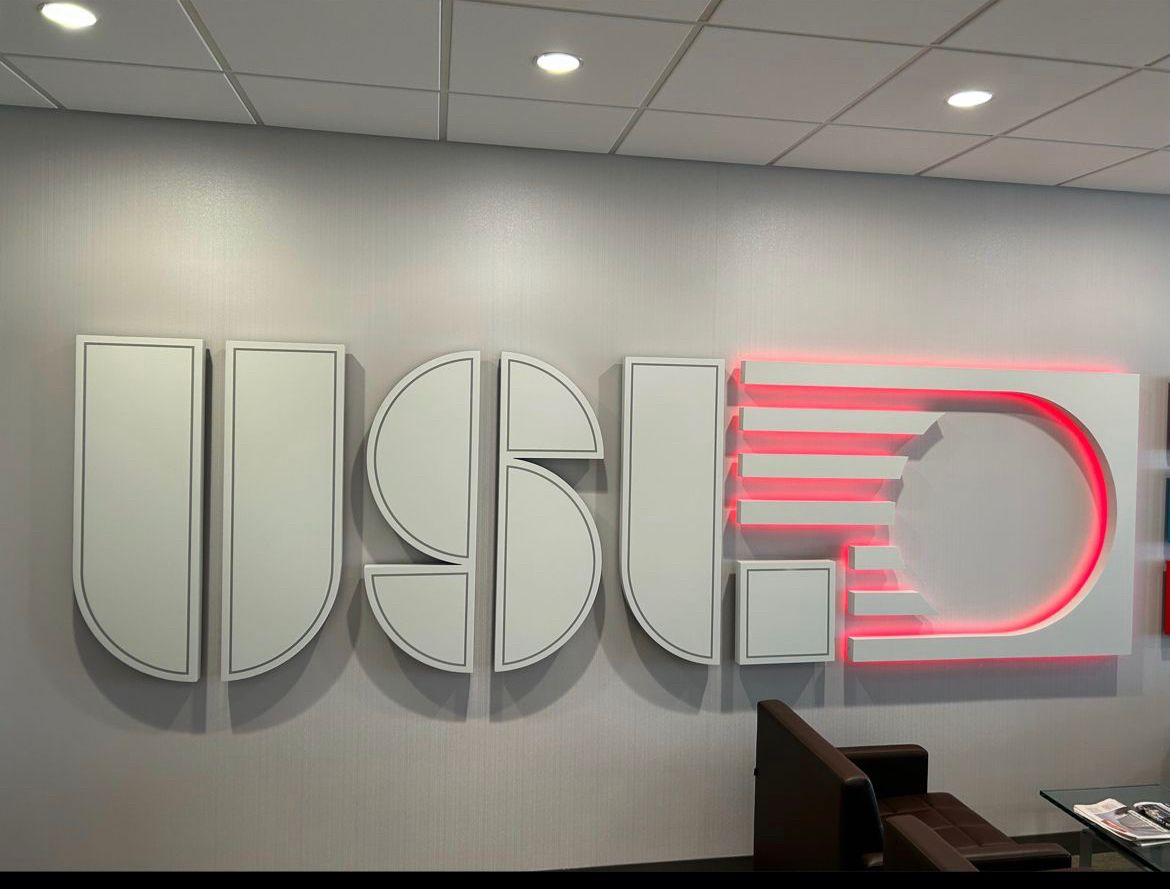
USL made national headlines when they announced on February 13th, 2025, their plans to launch a Division One league, followed by the announcement of promotion/relegation on March 19th for the new Division One league, the Championship, and League One. If sanctioned by US Soccer, USL Division One would be of equal status to MLS and compete for the best major soccer league in the U.S. The implementation of promotion/relegation in the USL would become the first in the U.S. and test the question asked for many years, “would pro/rel work in the U.S.” USL HQ informed the public that they planned to have the inaugural season of Division One during the 2027-2028 season with promotion/relegation beginning in 2028.
Until November 3rd, with the announcement of Tony Scholes being hired as the President of the Division One, only three teams have applied for membership to the inaugural season of Division one: Louisville City, North Carolina FC (who announced at the time of the Scholes news that they would fold until the launch of Division One), and Pittsburgh Riverhounds. There has been a rapid expansion of teams in the already existing leagues since the two announcements. Teams joining League One are: Fort Lauderdale FC (2026 debut), New York Cosmos (2026 debut), Port St. Lucie SC (2027 debut), Sporting Cascades FC (2026 debut), and Rodeo FC (2027 debut). Fort Wayne FC and Sarasota Paradise would also be joining League One from League Two (2026 for both teams). For the Championship, Reno, NV will once again have a team planned for a 2027 debut. Along with those teams, USL is actively working to expand to other markets. The markets and partners they are looking at are Brevard County, FL (Space Coast Pro Soccer), Riverside, CA (Riverside Pro Soccer), Brownsville, TX (City of Brownsville), Winter Garden, FL (Central FL Pro Soccer), Santa Rosa, CA (City of Santa Rosa), and Pensacola, FL (City of Pensacola).
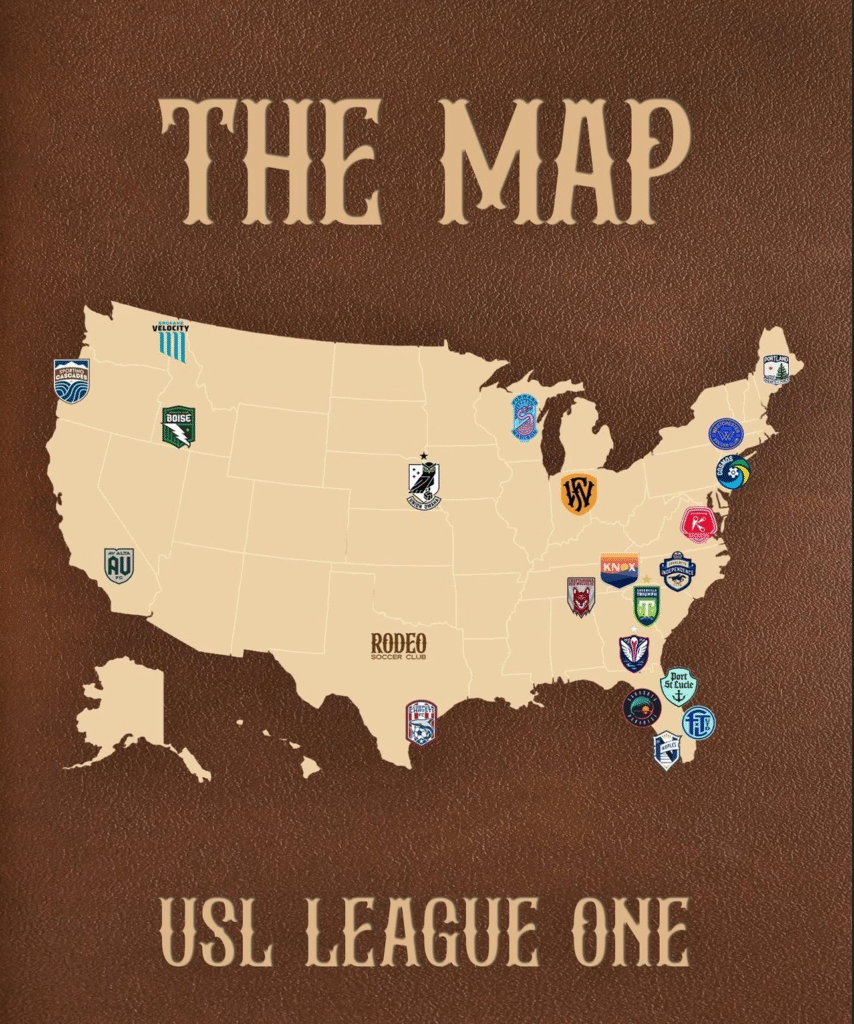
Along with these recently announced teams and partnerships, USL has teams joining the organization just in time for promotion/relegation that were announced prior to the February and March news. Starting with League One, these teams include: Corpus Christi FC (2026 debut) and Athletic Club Boise (2026 debut). As for the Championship, they will be adding Brooklyn FC (2026 debut), Sporting Jax (2026 debut), Atlético Dallas (2027 debut), Milwaukee Pro Soccer (TBD), USL Pro Iowa (TBD), Buffalo Pro Soccer (TBD), and Ozark United FC (2027 debut), while Santa Barbara Sky FC (2027 debut) would replace Memphis 901 FC.
Other than that, news on the Division One and promotion/relegation had been quiet until USL snatched Tony Scholes from the English Premier League. Tony Scholes will be the President of Division and help with the implementation of promotion/relegation. Scholes served as the chief football officer of the EPL and will join USL at the end of the EPL season. As of November 15, 2025, USL Division One has not been sanctioned as a division one league by US Soccer. The hiring of Scholes indicates that they are confident this new league will get approved or they have already been told it will, behind closed doors. The fact that we have not heard news on what the promotion/relegation format would be, and Scholes task would be to help implement it could mean that USL has not come to a decision on one. Since we do not have any ideas on what the format could be, I want to provide a possible option that they could go with.
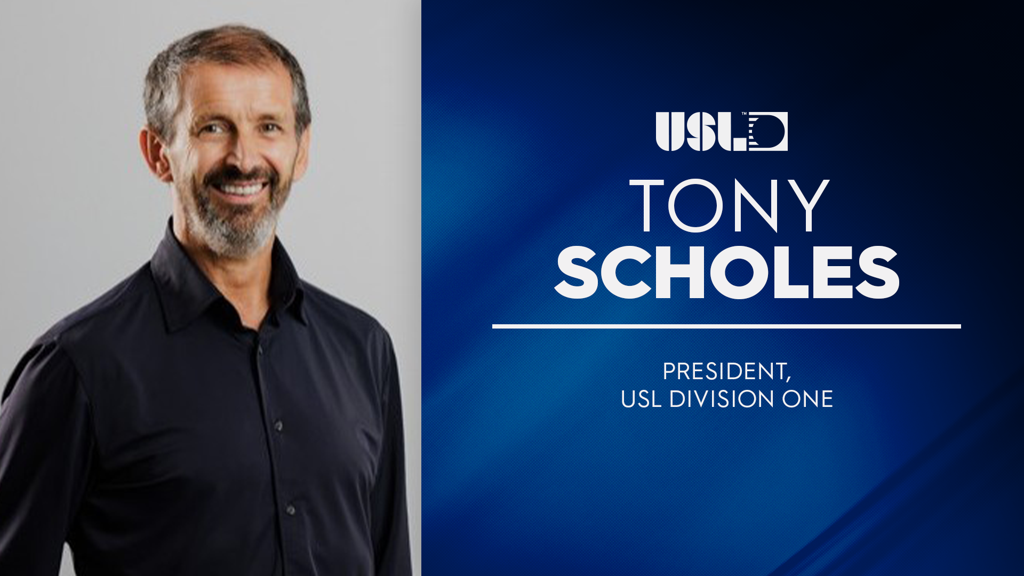
One of the biggest questions people have had since the USL announced promotion/relegation was how they would tie it to the playoffs. There is an option they could do, but it would result in only having one playoff. USL would have a playoff for Division One, but they would eliminate the concept for the Championship and League One. It might not be the most popular idea here in the U.S., but the main goal for the lower leagues is to get promoted, not to win a trophy. They would retain the league title for those two leagues with the winner being the team with the most points at the end of the season, just like how it is in the European leagues. The purpose is to create fairness for the top performing team(s) in the two lower leagues and reduce confusion. If there is a need for a playoff format, they could adopt the format the Bundesliga uses where the 16th best team in the first division and the 3rd best in the second division face-off in a two-leg match to see who would be in the first division the following season. The other option is the Championship concept, where the teams who finished 3rd through 6th in the table compete in a promotion playoff. The semi-finals are two-leg matches while the final is a single-leg match. The winner is promoted to the EPL. The execution of promotion/relegation must be done perfectly to retain fans, gain fans, prevent confusion, and be entertaining.
USL already has a division one league with their women’s Super League, who is competing against the NWSL. Currently, the S League has only nine teams (Brooklyn FC, Carolina Ascent FC, Dallas Trinity FC, DC Power FC, Ft. Lauderdale United FC, Lexington FC, Spokane Zephyr FC, Sporting Jax, and Tampa Bay Sun FC) to the NSWL’s 14 teams (3 teams in the works). The Super League will be adding an additional nine teams (Athletic Club Boise, New York Cosmos, Ozark United FC, Buffalo Pro Soccer, Chattanooga Red Wolves FC, Forward Madison FC, Indy Eleven, Oakland Soul SC, and USL Palm Beach) with all but three to have their inaugural season to be determined. What makes the S League unique from the rest of the soccer leagues in the U.S. is that they use a fall-summer schedule. Competing against a top five women’s league in the world is a tall ask, but it shows the ambitions of USL.
They are also willing to take risks by voting to pass promotion/relegation for the men’s league and have a fall-summer schedule for the S League. If the S League schedule format proves successful, it stands to reason that they would move the men’s leagues to the same schedule. It would also avoid the organization from having to fight MLS for viewership when the leagues are in play, especially when they launch a direct rival and are at their most ambitious point in their history. The same can be done for the S League if promotion/relegation is successful for the men. USL can start establishing lower women’s leagues and introduce promotion/relegation to the women’s game here in the U.S.
Many would say USL still stands no chance at competing against MLS, even with promotion/relegation and having a division one league. That is the case when you look at the quality of the players is finance, but that is the reason why the USL made these decisions based on the reports prior to the announcements and afterwards. Promotion/relegation and the introduction of a division one league could see an increase in investors. We are already seeing that with the likes of Gio Reyna joining Fort Lauderdale as an investor, BellTower Partners investing into USL, Sofia Huerta and Kasey Keller joining the Athletic Club Boise ownership group, and the Chickasaw Nation becoming an investor of the OKC for Soccer just this year alone. Then there is the expansion fee for MLS, MLS Next Pro, and the USL leagues. MLS charges an astounding $500 million! Yes, the money is used to construct a proper stadium, acquire players, etc., but at this point it will discourage many from purchasing a franchise license. MLS currently only has two leagues and one of them is advertised as a development league to prepare for MLS. The expansion fee for an independent team to join MLS Next Pro is unknown, but Sports Business Journal reported in 2024 that it is significantly cheaper than the USL Championship. The fee to join the USL Championship is $20 million while League One is only $5 million. These two fees are significantly lower than MLS and that will be more appealing to potential owners, but unlike the MLS fee, it is not enough for a stadium, training grounds, and players. As for what the fee is to join USL Division One, that is unknown at the moment.
I highly recommend reading the ESPN article by Jeff Carlisle titled “Will USL’s Move to Pro-Rel Change U.S. Soccer, Threaten MLS?” In there, Carlisle discusses the reasons behind the decision and that it is mostly financial. For example, a USL spokesperson said they expect to see an increase in commercial revenue by 15% to 30% due to promotion/relegation. Also, the former owner of San Diego Loyal lost $40 million in 4 seasons. As for the reaction from MLS, we have not heard one yet. The only possible reaction we have seen from them is what the former MLS Next Pro president, Charles Altchek, told to Backheeled back on March 6th, 2025. In the interview, he told them they aim to have 40 to 50 teams and a possible second league with one of the MLS Next Pro leagues being a second division, putting it in direct competition with USL Championship. The biggest question is, whichever league that is, can compete for fans? Due to the Apple TV deal, we currently do not have the ratings of MLS Next Pro. The closest idea we have is the attendance, which is 5,580 for USL Championship per match to MLS Next Pro’s 3,361, according to Transfermarkt. Unlike the attendance, the viewership for USLC is much higher where the season premiere match had 453,000 viewers. MLS Next Pro’s massive expansion plan announcement date was either a coincidence, or MLS got word USL’s promotion/relegation implementation with the division one news, and this was their response. I will let you come to your own decision.
It seems, as of right now, it appears MLS will sit back and wait to see how the USL’s Division One and promotion/relegation will play. Division One and promotion/relegation will either be successful for USL and lead them to the financial success they are hoping for or lead to the possible collapse of USL. American sports fans are not the only ones keeping their eyes on USL now, but the rest of the soccer world is after their two massive news. The coming years are going to be exciting times for American soccer!
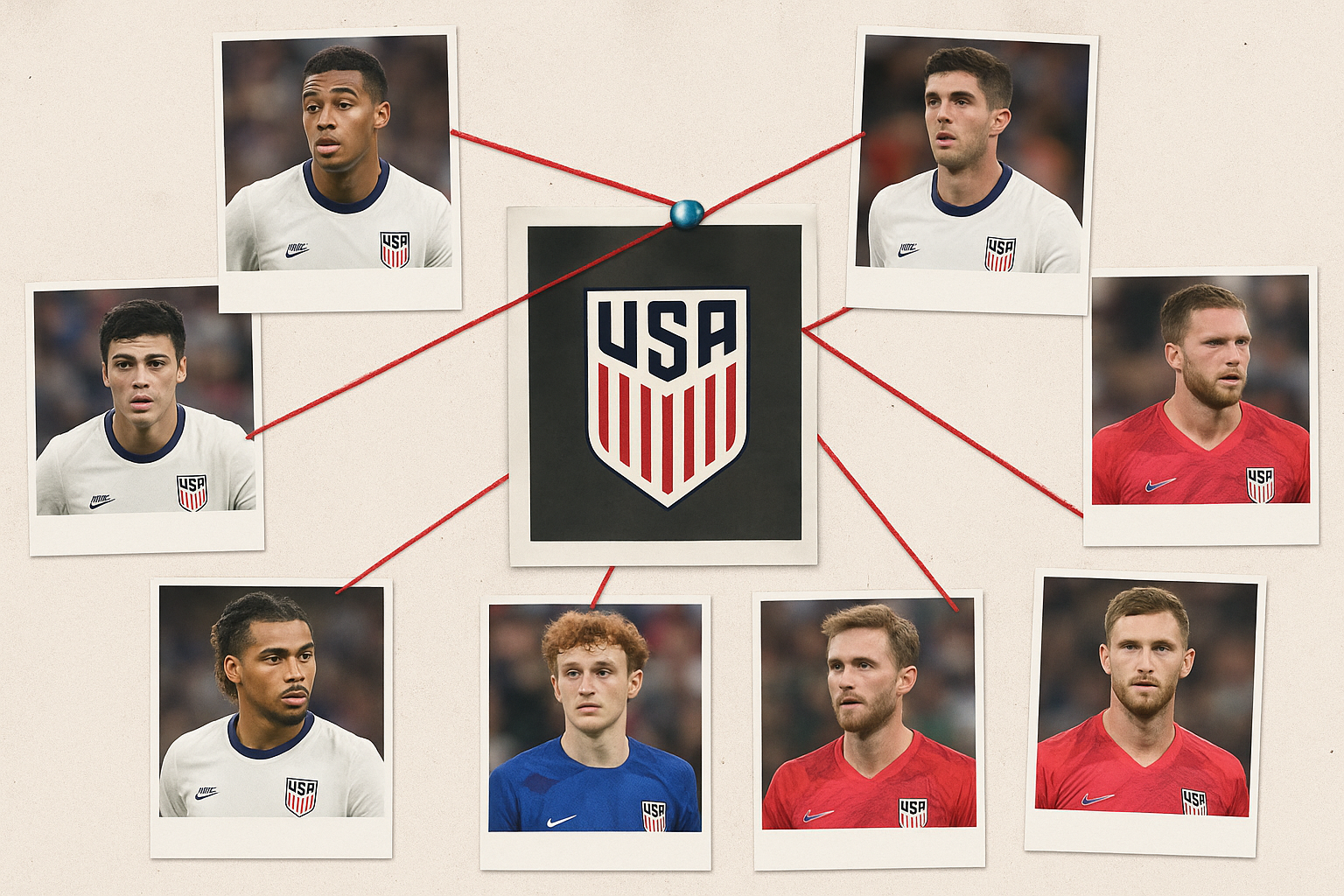
Thomas Deschaine (@uskeeper on X and us_keeper on Instagram)
With the September FIFA window now in the rearview mirror, and only three more windows left before final rosters are set in late May or early June 2026, Mauricio Pochettino has drawn a clear line.
He’s stated that September’s camp was the “last camp to have the possibility for new faces.”
If we take him at his word, the nearly 70 players who’ve been called across six camps and the Gold Cup will form the pool from which he selects the 2026 World Cup squad.
Of the 60 players named to the 2025 Gold Cup provisional roster, only five, Maxi Dietz, Richie Ledezma, Tim Tillman, Caleb Wiley, and Griffin Yow, have yet to appear on a #USMNT roster under Pochettino.
Comparing the 2025 Nations League provisional roster to the Gold Cup list reveals over a dozen different players, raising the question: are these minor differences simply the edges of the player pool Pochettino intends to draw from?
Goalkeepers
Nine goalkeepers have been called into Pochettino’s camps, but it’s clear that Matt Freese is his first-choice right now, with Matt Turner likely the No. 2 as we sit just 10 months from the World Cup.
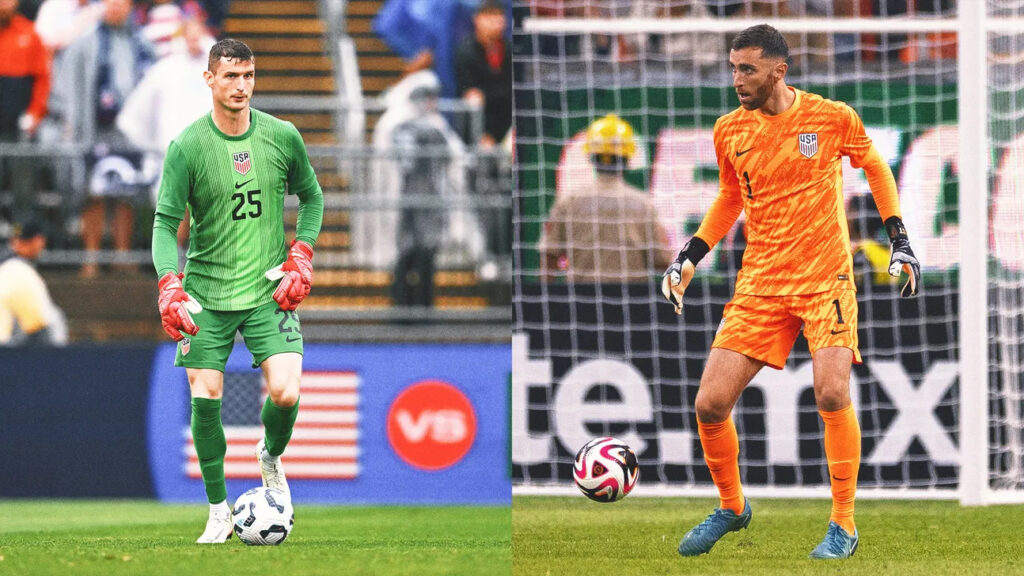
- Chris Brady
- Drake Callender
- Roman Celentano
- Matt Freese
- Ethan Horvath
- Jonathan Klinsmann
- Diego Kochen
- Patrick Schulte
- Zack Steffen
- Matt Turner
Fullbacks
Outside of Sergiño Dest and Antonee Robinson, the USMNT’s fullback depth remains a concern. Pochettino appears high on MLS defenders Alex Freeman and Max Arfsten, while Caleb Wiley, though yet to feature in a USMNT camp but named to recent provisional rosters, could still be on his depth chart.
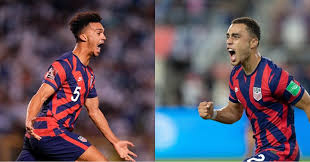
- Max Arfsten
- Sergino Dest
- Alex Freeman
- Marlon Fossey
- DeJuan Jones
- Kristoffer Lund
- Shaquell Moore
- Antonee Robinson
- Joe Scally
- John Tolkin
Centerbacks
Center back remains another position with uncertain depth. Chris Richards and the veteran Tim Ream look like locks for now, leaving three spots up for grabs. If Pochettino opts for a back three, that tactical shift could influence which players ultimately make the cut. Notably, Jackson Ragen and Maxi Dietz are the only center backs from the recent provisional rosters who haven’t been called into a USMNT camp.
- Noahkai Banks
- Tristan Blackmon
- George Campbell
- Cameron Carter-Vickers
- Mark McKenzie
- Tim Ream
- Chris Richards
- Miles Robinson
- Auston Trusty
- Walker Zimmerman
Central Midfielders
The central midfield position is the deepest for the #USMNT, with many players in the pool capable of also playing fullback, center back, or winger. Although Richie Ledezma has primarily played as a right back and right wing-back for his current club and for PSV last season, USMNT coaches view him primarily as a midfielder. This likely explains why he hasn’t yet been called into a USMNT camp.
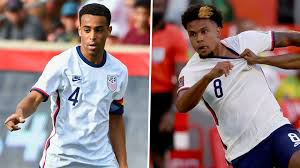
- Tyler Adams
- Sebastian Berhalter
- Gianluca Busio
- Johnny Cardoso
- Ben Cremaschi
- Luca de la Torre
- Emeka Eneli
- Jack McGlynn
- Weston McKennie
- Aidan Morris
- Yunus Musah
- Tanner Tessmann
- Sean Zawadzki
Attacking Midfielders
There are several players at this position who could add real quality and play pivotal roles for the #USMNT at next summer’s World Cup. Gio Reyna remains a major question mark, but his talent is undeniable. With his recent club change, there’s hope he can return to the high level of form we’ve seen from him in the past.
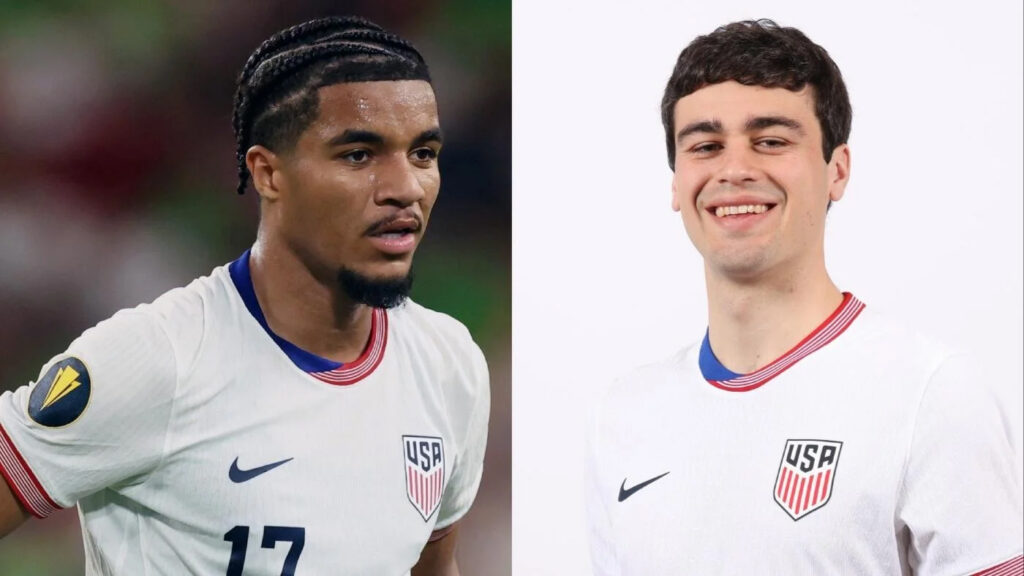
- Brenden Aaronson
- Paxten Aaronson
- Brian Gutiérrez
- Djordje Mihailovic
- Matko Miljevic
- Gio Reyna
- Malik Tillman
Wingers
The winger position remains thin for the #USMNT, though several players there can also slot in as attacking midfielders, strikers, or even fullback. Notably, two young wingers, Cole Campbell and Griffin Yow, appeared on provisional rosters but have yet to be called into any Pochettino camp.
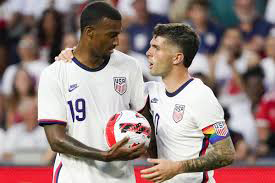
- Cade Cowell
- Diego Luna
- Christian Pulisic
- Quinn Sullivan
- Indiana Vassilev
- Tim Weah
- Haji Wright
- Alejandro Zendejas
Strikers
Another area of concern for the USMNT is striker depth. While the top options have all produced well for their clubs when healthy, injuries have kept the pool thin. If everyone is fit, the primary competition for the starting role likely comes down to three players: Folarin Balogun, Ricardo Pepi, and Josh Sargent. Haji Wright and Tim Weah can also step in as center-forward options if needed.
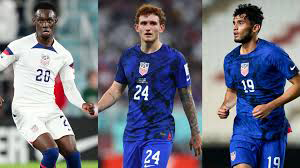
- Patrick Agyemang
- Folarin Balogun
- Damion Downs
- Jesus Ferreira
- Ricardo Pepi
- Josh Sargent
- Brandon Vazquez
- Brian White
Conclusion
It’s tough to read Pochettino’s mindset right now. Many expect fewer MLS players to be called for the October window, partly because the league continues through FIFA dates and the regular season ends mid-October.
Most World Cup rosters largely select themselves, with only a few surprising omissions, think of the 1994 squad, which left out several players many felt deserved a spot.
But with Pochettino still showing a shaky grasp of the USMNT player pool, this cycle could produce more notable snubs than ever, though there’s still time for him to get it right.
Club News
From Louisville to Lisbon: Joshua Wynder’s Journey with S.L. Benfica
Published
5 months agoon
June 13, 2025By
Zach McCabe
The current state of the USMNT has been at an all-time low since Couva in 2017. One of the positions in dire situation is Center Back. Tim Ream will be 38 by the time of the 2026 World Cup. Chris Richards has too many highs and lows and has not shown his club form with the US. Cameron Carter-Vickers and Auston Trusty have yet to perform for the national team. Miles Robinson, despite what many MLS fans want to believe, is not good enough and makes too many errors, like the second Turkish goal on June 7th, 2025. Walker Zimmerman has one World Cup left in him and he has a history of making critical errors as well, like the penalty against Gareth Bale in the 2022 World Cup. Lastly, Mark McKenzie has improved his game since his move to Toulouse, but he is lacking the deserved opportunities and a good partnership.
Our U20 CBs will need to be called up sooner rather than later, either before or immediately after the 2026 World Cup. The top 3 prospects by fans and analysts are Noahkai Banks, Matai Akinmboni, and Joshua Wynder. Of the three, Joshua Wynder is the oldest at 20 years old and is part of a club that is world-renowned for their development, S.L. Benfica.
How did Wynder manage to accomplish such a move from Louisville City in the USL Championship to Benfica? To summarize, Wynder had a breakout season for Lou City at 17 years old in 2022, so much so that he was included in the US U20 World Cup team in 2023.

Wynder secured a spot to go on trial at Benfica and passed. On June 8th, 2023, Benfica officially acquired Joshua Wynder from Lou City for a record-breaking $1.2 million transfer fee, which still stands today.

Benfica registered Wynder with the second team for the 2023/2024 season, who participate in Liga Portugal 2. Due to Portuguese rules (players play in the youth system until they are 19 years old), he spent the season with Benfica’s UEFA Youth League team and U23 team and only received 21 minutes with the B team until a season-ending injury. What began as a promising start, with the support of the fans, was cut short after just six matches. The following season went according to plan for Wynder. Wynder became a consistent starter for the B team where he started in 29 matches and appeared in a total of 31 matches. He also scored four goals, all headers from corners.

His success with the B team made him a fan-favorite and several calls to be called up to the first team by fans on social media. That day came on April 9th, 2025, when he made the team sheet for Benfica’s Taça de Portugal Semi-Final match against FC Tirsense. Wynder made his first team debut when he was subbed in at the 76th minute mark of that match. He made a following appearance on the bench for the first team in their second leg match against FC Tirsense.
As early as November 27, 2024, it was reported by Glorioso 1904 that Joshua Wynder had gained the attention of the Benfica manager, Bruno Lage. The report further said that Wynder was becoming an option for the next season’s first team. A similar report surfaced on March 25, 2025, by Record, in Portugal, that Wynder is on track to be with the first team for the 2025/2026 season. That day may be coming sooner rather than later. Joshua Wynder will be joining Benfica on their 2025 Club World Cup campaign. This will be a true test for him to prove to Bruno Lage that he is ready to be part of the first team for the upcoming 2025/2026 Liga Portugal and UEFA Champions League season. If he is given serious minutes with the first team and performs, Joshua Wynder needs to be considered for the 2026 World Cup or immediately following the World Cup.

Benfica is in Group C of the Club World Cup with Auckland City, Bayern München, and Boca Juniors. Their first match is against Boca Juniors, 33-time Argentine champions, on June 16th. Game two is on June 20th against 10-time New Zealander champions, Auckland City FC. Lastly, their 3rd group stage match is against the 6-time UEFA Champions League winners, Bayern München, on June 24th.
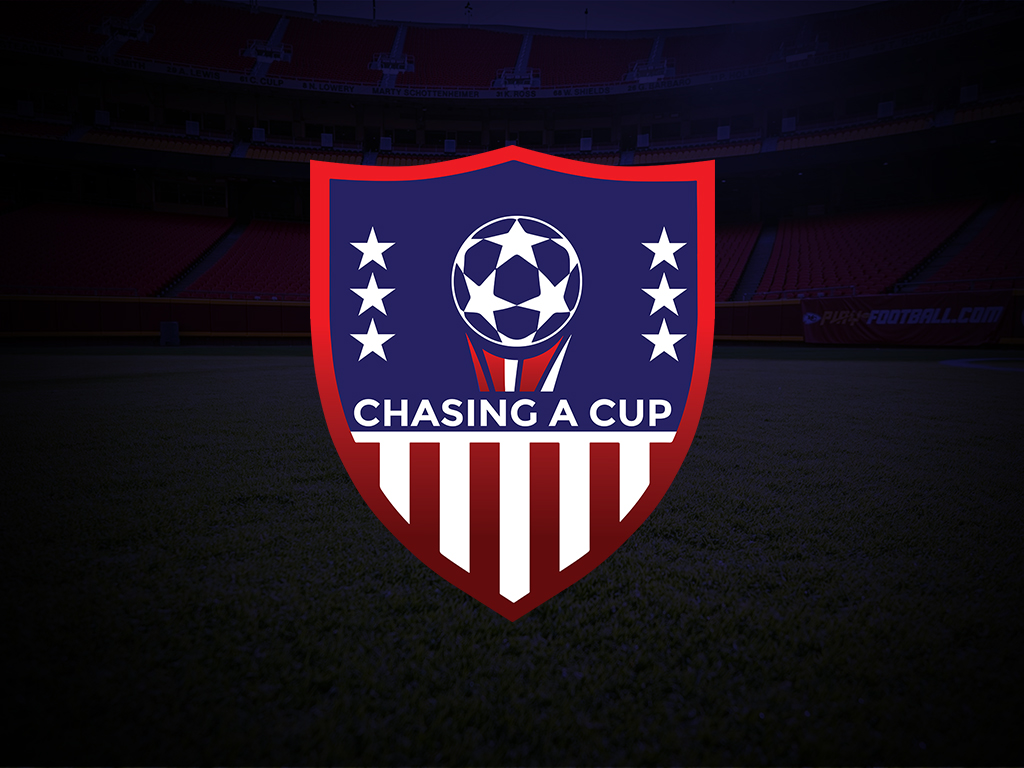

USL’s American Soccer Dream

From Maradona to Messi

One Home or Many? The Debate Over a Primary Venue for U.S. Soccer

Trending
-

 Club News1 year ago
Club News1 year agoAmerican Transfers: Stock Up & Stock Down
-
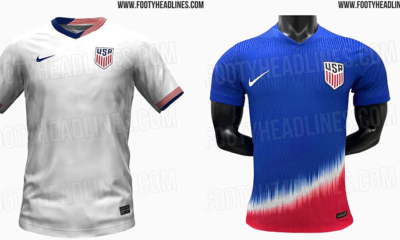
 USMNT2 years ago
USMNT2 years agoUSMNT Kits Come in Different Styles and Colors
-

 Club News6 years ago
Club News6 years agoJulian Vincente Araujo
-
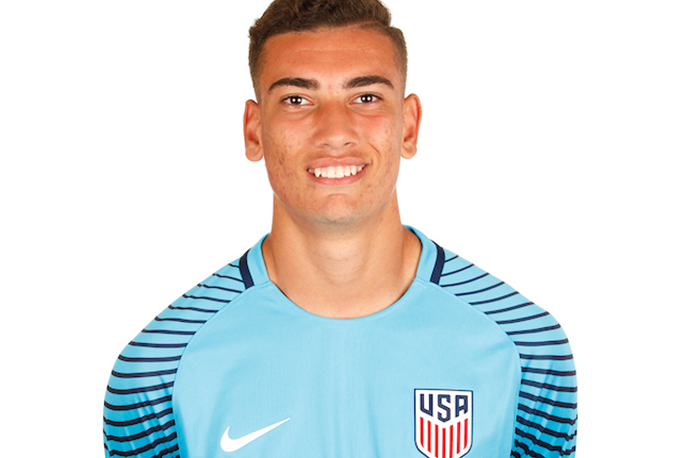
 Club News5 years ago
Club News5 years agoCJ dos Santos, Benfica
-

 USMNT5 years ago
USMNT5 years agoA Hidden Gem: Barça Residency Academy
-
USMNT3 years ago
World Cup Format History
-

 USMNT2 years ago
USMNT2 years agoIs the MLS Specifically Targeting Expansion to USL Cities?
-
USMNT6 years ago
MLS Quota

